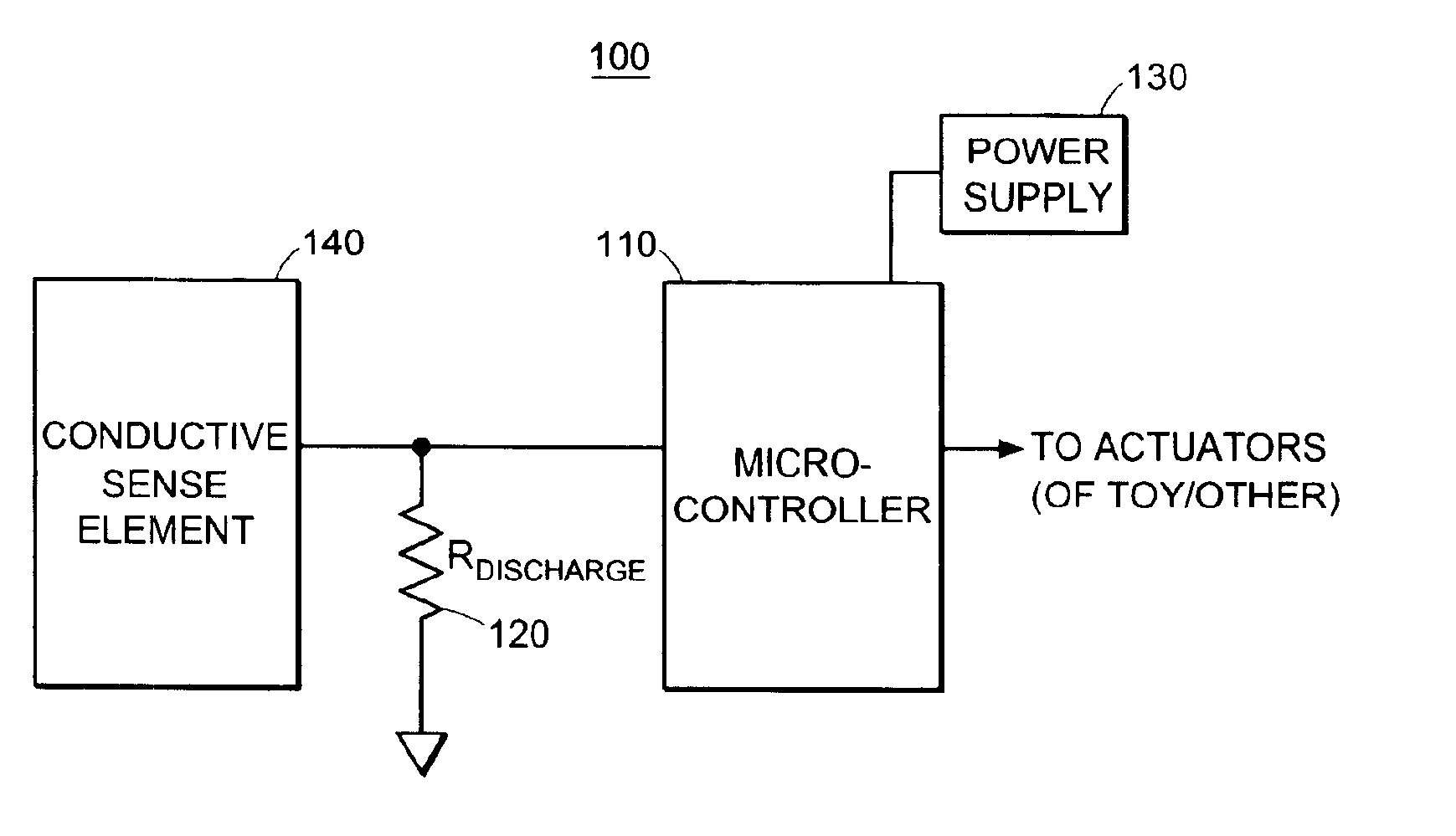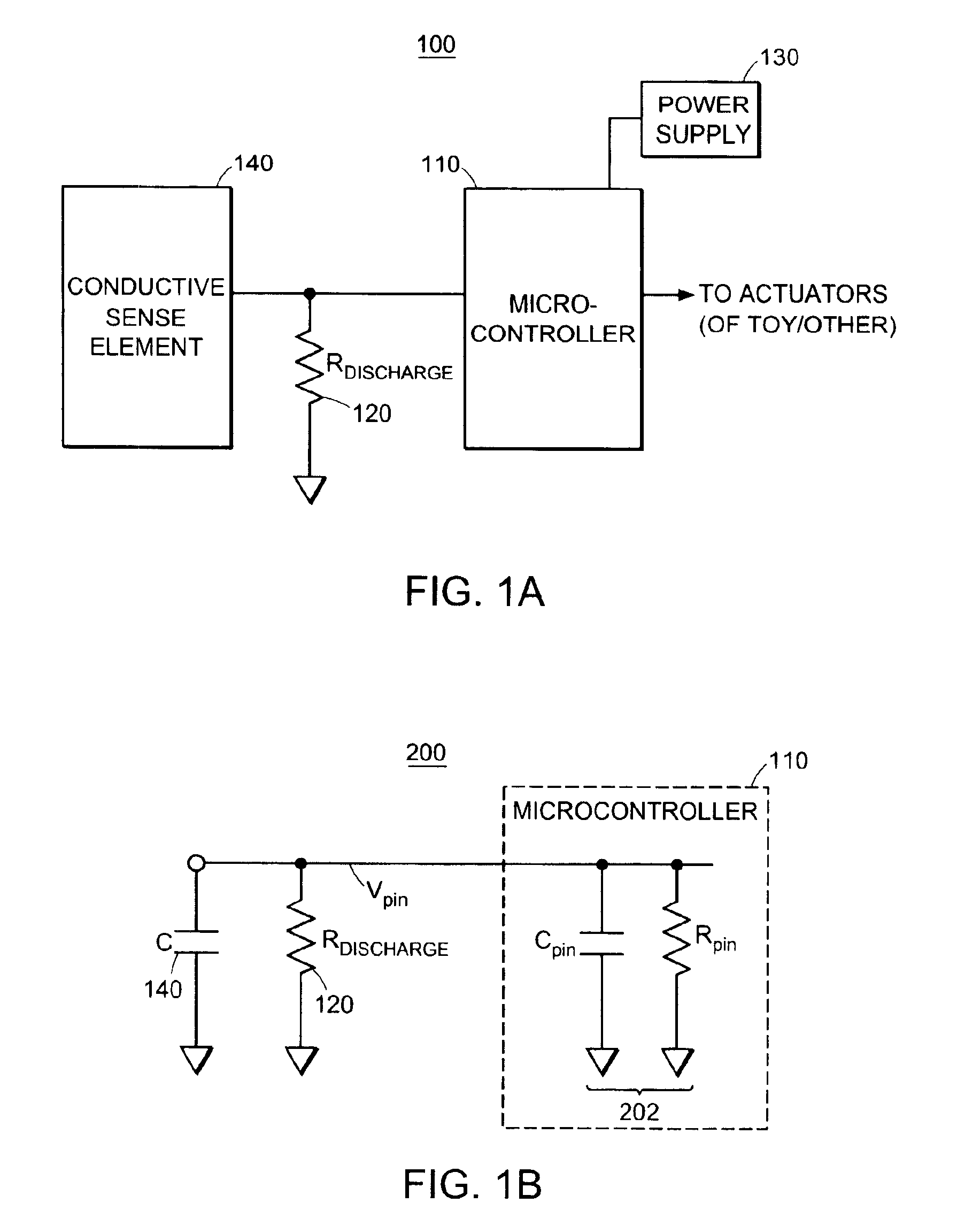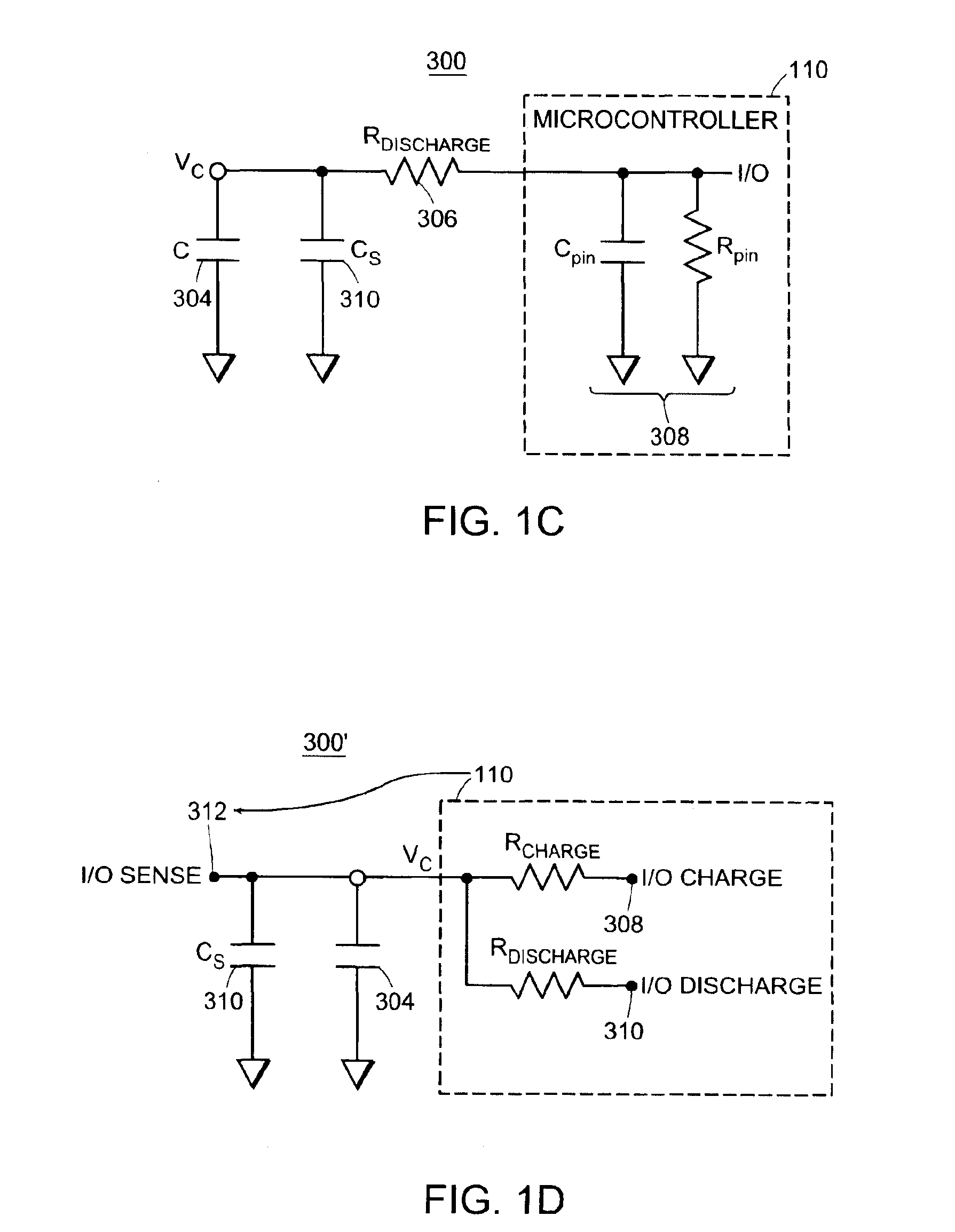Capacitive sensor systems and methods with increased resolution and automatic calibration
a sensor and capacitive technology, applied in the field of capacitive sensing, can solve the problems of reliably detecting touch, metallic or other potentially dangerous components exposed on the outside of the toy or other object, and the limitations of pushbuttons or similar switches
- Summary
- Abstract
- Description
- Claims
- Application Information
AI Technical Summary
Benefits of technology
Problems solved by technology
Method used
Image
Examples
Embodiment Construction
provides additional information and further examples.
BRIEF DESCRIPTION OF THE DRAWINGS
[0041]The invention, as well as features and advantages thereof, will be more readily understood from a reading of the following detailed description of various examples thereof, and by reference to the accompanying drawings, wherein:
[0042]FIGS. 1A-1F are a schematic drawing showing electrical circuitry employed in embodiments of the present invention;
[0043]FIGS. 2A-2D are flowcharts of method steps utilized in conjunction with the invention;
[0044]FIG. 3 is a schematic diagram illustrating virtual sensor processes within the microcontroller; and
[0045]FIG. 4 is a schematic diagram illustrating an embodiment of the invention that provides non-contact object identification.
DETAILED DESCRIPTION
[0046]The following description and accompanying drawings describe and illustrate various embodiments of the methods and systems of the present invention. It will be understood that while several examples shown a...
PUM
 Login to View More
Login to View More Abstract
Description
Claims
Application Information
 Login to View More
Login to View More - R&D
- Intellectual Property
- Life Sciences
- Materials
- Tech Scout
- Unparalleled Data Quality
- Higher Quality Content
- 60% Fewer Hallucinations
Browse by: Latest US Patents, China's latest patents, Technical Efficacy Thesaurus, Application Domain, Technology Topic, Popular Technical Reports.
© 2025 PatSnap. All rights reserved.Legal|Privacy policy|Modern Slavery Act Transparency Statement|Sitemap|About US| Contact US: help@patsnap.com



